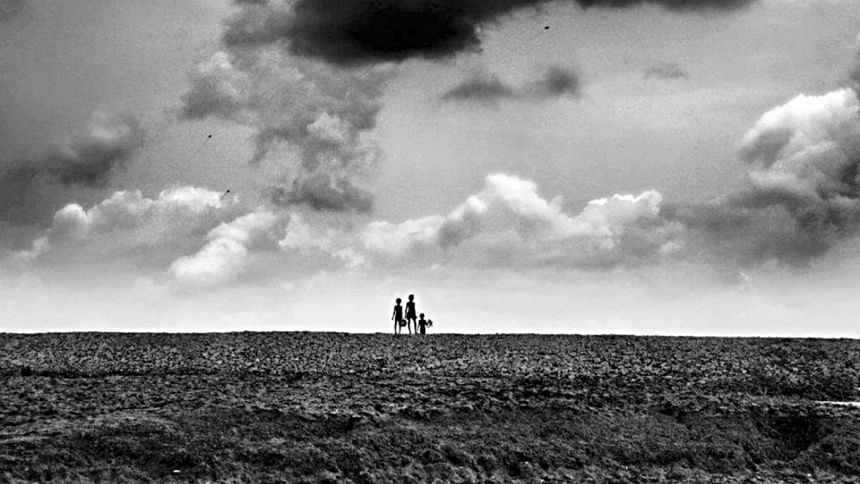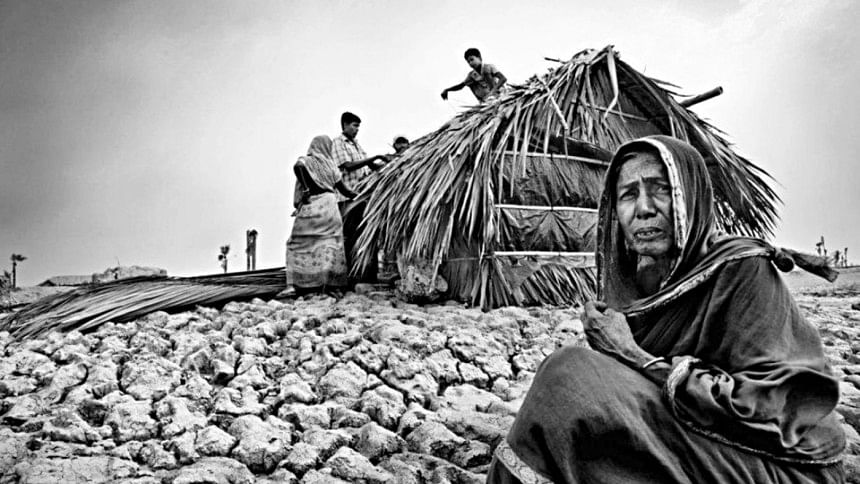The dangerous half degree

A new report published last week by the United Nation's Inter Governmental Panel on Climate Change (IPCC), an organisation consisting of leading climate scientists from all over the world, has warned that by 2030, the earth's temperature is expected to witness an increase by at least half a degree.
At the onset, an increase by a degree or two may not exactly ring alarm bells for people who aren't really aware about the effects of climate change. However, as this report, and the many others that have preceded it, suggests, we are meandering into a territory never experienced by humankind before—a path that is bound to lead to catastrophic changes.
The earth's average temperature has been increasing at a faster rate ever since the industrial revolution because of the huge amount of carbon, along with other greenhouse gases, being pumped into the atmosphere. Carbon has the ability to retain heat. As such, the more carbon is pumped into the atmosphere, the hotter the earth will get. The worst affected areas are the oceans, which cover 70 percent of the earth. The water bodies expand upon absorbing heat, add to that the melting glaciers, and that upsets the ecosystem of the planet. For instance, more heat is likely to create more moisture and that's going to have an effect on the patterns of the cyclones. The expansion can lead to floods and also change the weather pattern in many areas.
According to the report, an increase by half a degree will put 31 to 69 million people in danger of getting affected by floods. The Mediterranean region will see an increase in dryness and 350 million people worldwide will be affected by water scarcity. And yet the report says that a half a degree increase is the best possible scenario.
What that basically means is that at the current rate the earth is headed for a much larger increase in its average temperature within the next few decades and at the moment the best we can do is restrict the change to half a degree. Scientists have already said that restricting the increase even to 1.5 degrees centigrade will be a highly difficult task.
The IPCC has come up with several reports in the past, however, their latest document, according to scientists, is nothing like the past. Dr Saleeumul Huq, a Bangladeshi scientist based in London, who is also the Director of the International Centre for Climate Change and Development, says that the IPCC, through this report, has given its clearest warning till date.
“It is warning us of the impending severity of climate change impacts. In the past they did not do that. It's saying that climate change is happening and that the window to prevent a catastrophic change is closing very fast. So, all the countries have to now step up action to avoid the increase and keep it to 1.5,” says Dr Huq.
It goes without saying that if the report is not adhered to, countries such as ours are likely to be the worst affected. “Bangladesh is recognised as one of the most vulnerable countries and therefore for Bangladesh and other vulnerable countries, it is important to galvanise global action. The report is not meant for Bangladesh to act. We know what we have to do. But it is meant for all those countries which are meant to take much stronger action,” explains Huq.
It is often said that Bangladesh is actually in the midst of climate change and the way the characteristics of the cyclones and the floods in the country have changed over the last three decades is a mere indication. For instance, from 1987 to 2017, the country witnessed seven floods that inundated or devoured more than one-third of the nation. In the 30 years prior to 1987, that benchmark was surpassed just once, in 1974. Each of these floods has caused plenty of destruction and havoc, and the increase in frequency is not good news.

In between 1980 to 1990, more than 35 percent of the nation went under water twice. In 1987, close to 40 percent of the country was under water, while more than 60 percent of the nation was below water in 1988.
The period between 1990 and 2000 witnessed a more threatening trend. From 1995 to 2000, floods consistently inundated more than 20 percent of the country every year. This includes the disastrous floods of 1998, which drowned 70 percent of the country. These were by far the worst floods Bangladesh had ever witnessed.
In between 2000 and 2010, 40 percent of the nation went under water in 2004 and 2007. Again in 2017, which saw the floods devour the haors, at least 40 percent of the nation drowned.
It is not just floods that are displaying an increase in intensity. Tropical cyclones have also shown a similar trend. One of the most crucial factors for measuring the intensity of a cyclone is its wind speed. According to data from the SAARC Meteorological Research Centre (SMRC), between 1991 and 2009, Bangladesh witnessed five cyclones with a maximum wind speed of above 200 kph.
On the contrary, between 1901 and 1990, the country had witnessed just one cyclone— in November 1970, which crossed the 200 kph barrier. This goes to show that severe cyclones, or cyclones with high speeds, were a lot rarer in the early 1900s. Aside from causing casualties and extensive destruction, cyclones also push salt water into the fresh water areas in the coast, which increases the salinity of the water and in turn affects the farmers. Several farmers are then forced to quit their age-old profession and come to the city in order to support themselves.
The good news is that certain countries, which pump the most amount of carbon into the atmosphere, have drastically changed and aligned with the goals of lessening the impacts of climate change.
The United States, for instance, despite Donald Trump's resistance, has witnessed plenty of progress. The country is on track to meet the goals of the Paris agreement. The governor of California, the fifth largest economy in the world, has declared that the state will completely depend upon renewable energy by 2045, which is five years earlier than the agreement made in Paris.
China and several countries in Europe are also working towards positive changes.
However, the latest IPCC report suggests that a lot more steps need to be taken, and they need to be taken very quickly.

 For all latest news, follow The Daily Star's Google News channel.
For all latest news, follow The Daily Star's Google News channel. 



Comments